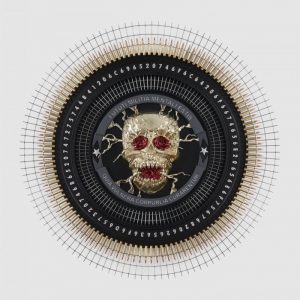Trailer for the 12th edition of the GAMERZ festival
I’ve attended a fair number of editions of the GAMERZ festival over the years. The event seems to have found a formula that works, developed a personality of its own while always bringing to light new artists, perspectives and ideas that surprise me. Some of the performances are a bit mad and frenzied, a bit raw and totally at odds with the sleek and efficient aesthetics and atmosphere of many other media art festivals. And that’s why GAMERZ remains one of my favourite art appointment of the year.
Under its laid-back guise, GAMERZ is also sharp and subversive. It uses games, interactions and sounds as vehicles to observe a society re-shaped by technology and a technology challenged by artists and hackers.
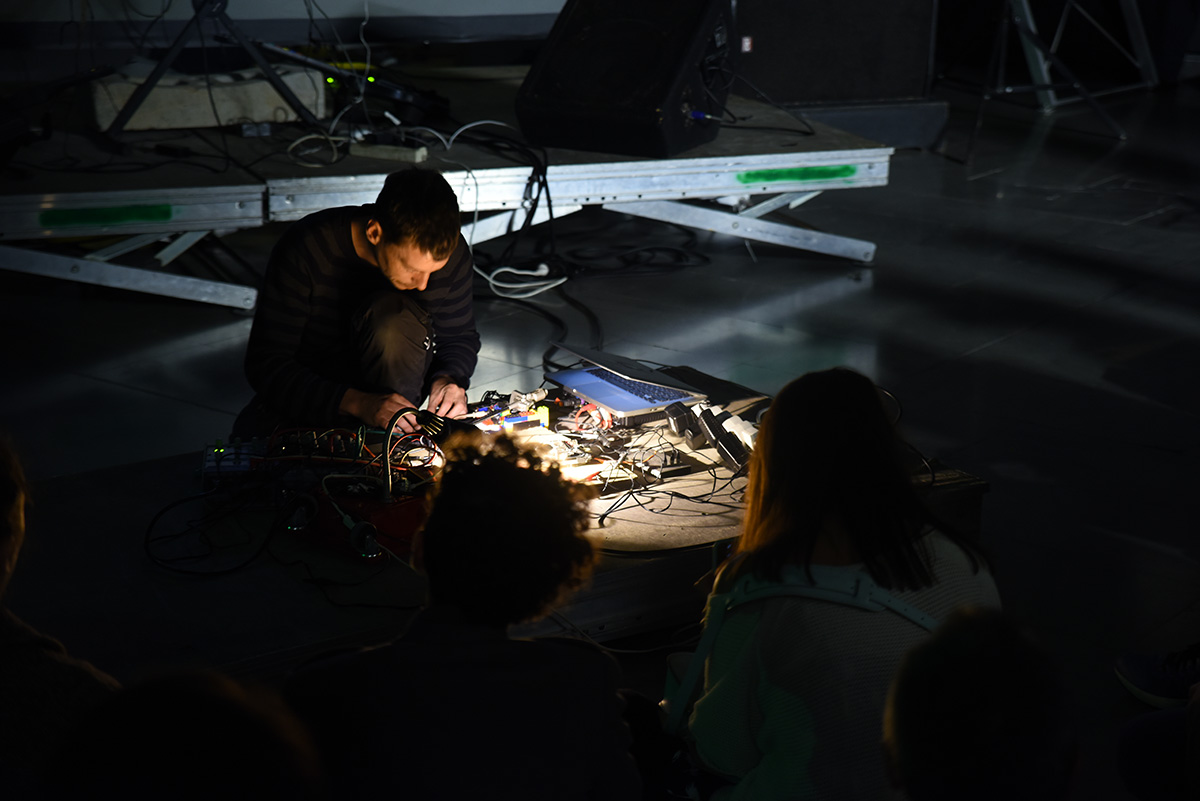
Tapetronic aka Alexis Malbert performance at GAMERZ. Photo by Luce Moreau

Yann Leguay, Stück für Stöcke
This year, the festival was organized around two fairly different themes. Simulated Universe, curated by Ewen Chardronnet and D. Générer, curated by Quentin Destieu.
Today, I’m going to focus on D. Générer, an exhibition and series of performances that explored the aesthetic peculiar to the kind of “digital” artworks that is guided by craft, kludge and a rowdy DIY spirit. These works are (de)generated by the touch of the human hand. They don’t have the efficient and polished aesthetic of design products, but they have soul, vigor and warmth.
“Researchers an theoreticians have already demonstrated the role of art & science-inspired aesthetics in the service of innovation and industry,” Destieu writes. “But they tend to underestimate the alternative and subversive aesthetic potential of these artistic forms, reducing them to default prototyping. Contrary to American historian Fred Turner’s dearest « makers » movement, in which innovating prototypes are to be eventually re-designed to be mass-made and sold, artists claim a different end to their works.”
Each work selected for the show champions an ‘alternative’ aesthetic that values the glitches of the process and the imperfection of technology. Perhaps even more interestingly, these works present themselves as a kind of anti-Apple squad, they open up their guts and show the mechanisms that brings them to life. By doing so, they suggest that there is an alternative to our passive-impassive consumer attitude and that now has come the time to reconnect with the objects that surround us (no matter how high-tech or low-tech they are) and make them our own:
A quick look at some of the artworks:
Yann Leguay, Arnaud Rivière and Jérôme Fino, DIRECT OUT. Sound experiments in the streets of Mulhouse (France) during the Météo music festival
Direct Out takes sound creation and sound distribution outside of the concert halls, galleries and other traditional venues for music. The artists behind the work, Yann Leguay, Arnaud Rivière and Jérôme Fino, DIYed their own instruments by repurposing existing gadgets and materials. They then walked around the city looking for street furniture, trees and objects that would make their autonomous modules beep, buzz and resonate. By hooking up onto existing infrastructure, the small devices adopt a parasitic behaviour but they do so while remaining low-key and unobtrusive. They never not attempt to compete with the existing soundscape. Instead, they quietly capture and reveal the untapped energy and confidential vibrations of the urban environment.
If you read french, poptronic has a great write-up of the work.
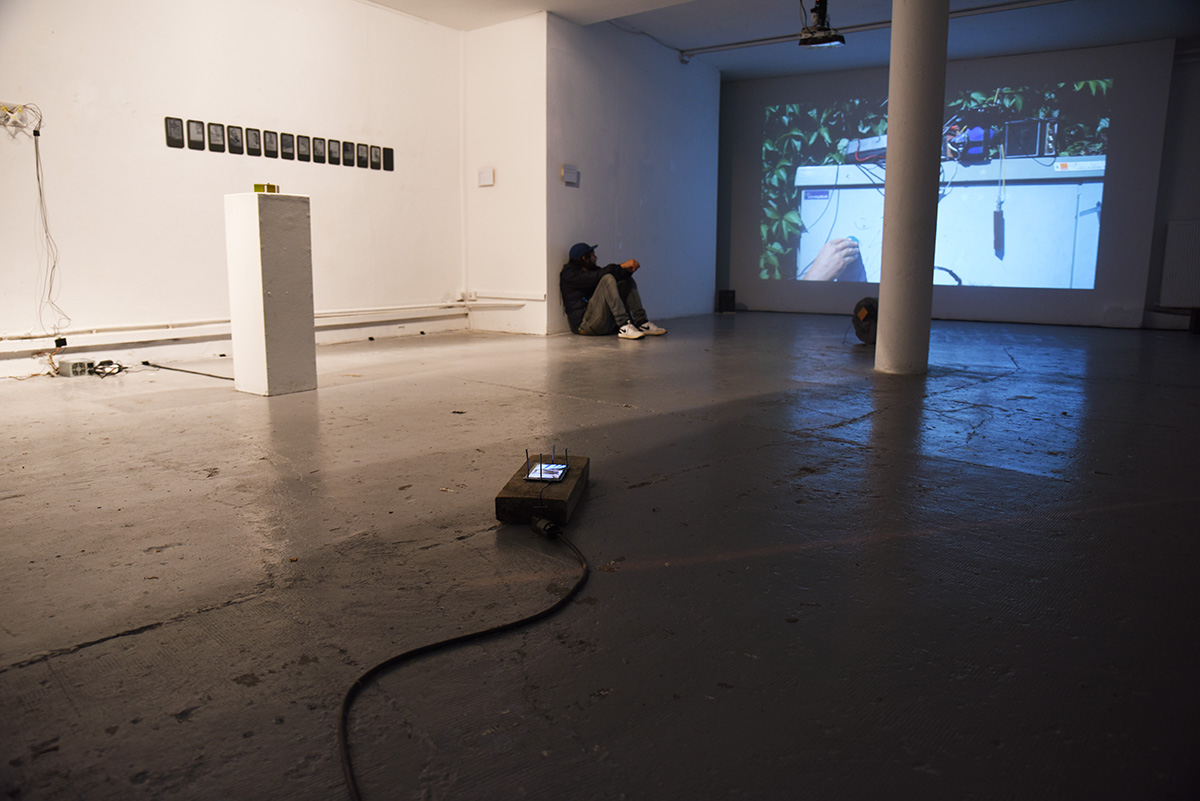
View of the exhibition space. Photo by Luce Moreau for GAMERZ
Yann Leguay, Stück für Stöcke

Yann Leguay, Stück für Stöcke
With Stück für Stöcke, Yann Leguay replaced with a piece of wood the tablets and phones held by game players in youtube videos. All that remains is the player’s finger gestures. The removal of the usual visual references reminds us of that interfaces are of little use without our own movements. Something that has always been clear to a tech industry obsessed with identifying every single gesture that can be patented and monetized.
Tapetronic aka Alexis Malbert, Scratchette demo 2016
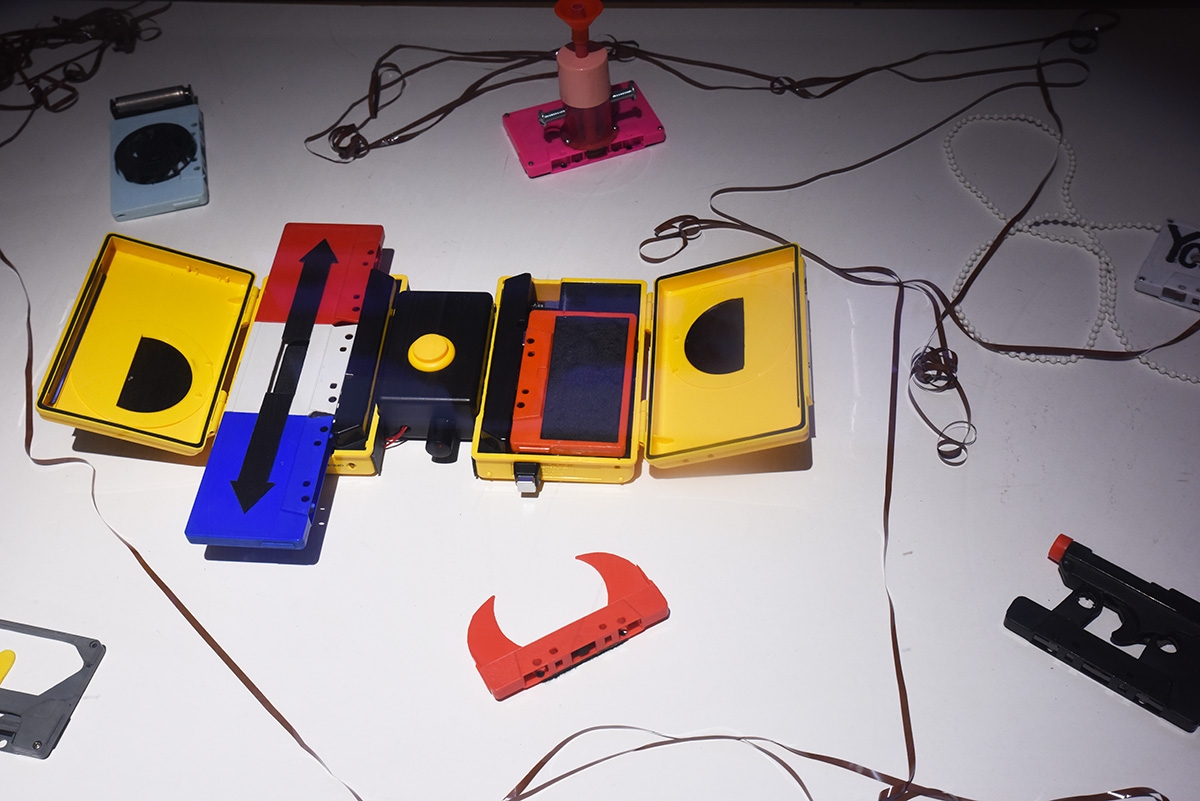
Tapetronic aka Alexis Malbert, Scratchette. Photo by Luce Moreau
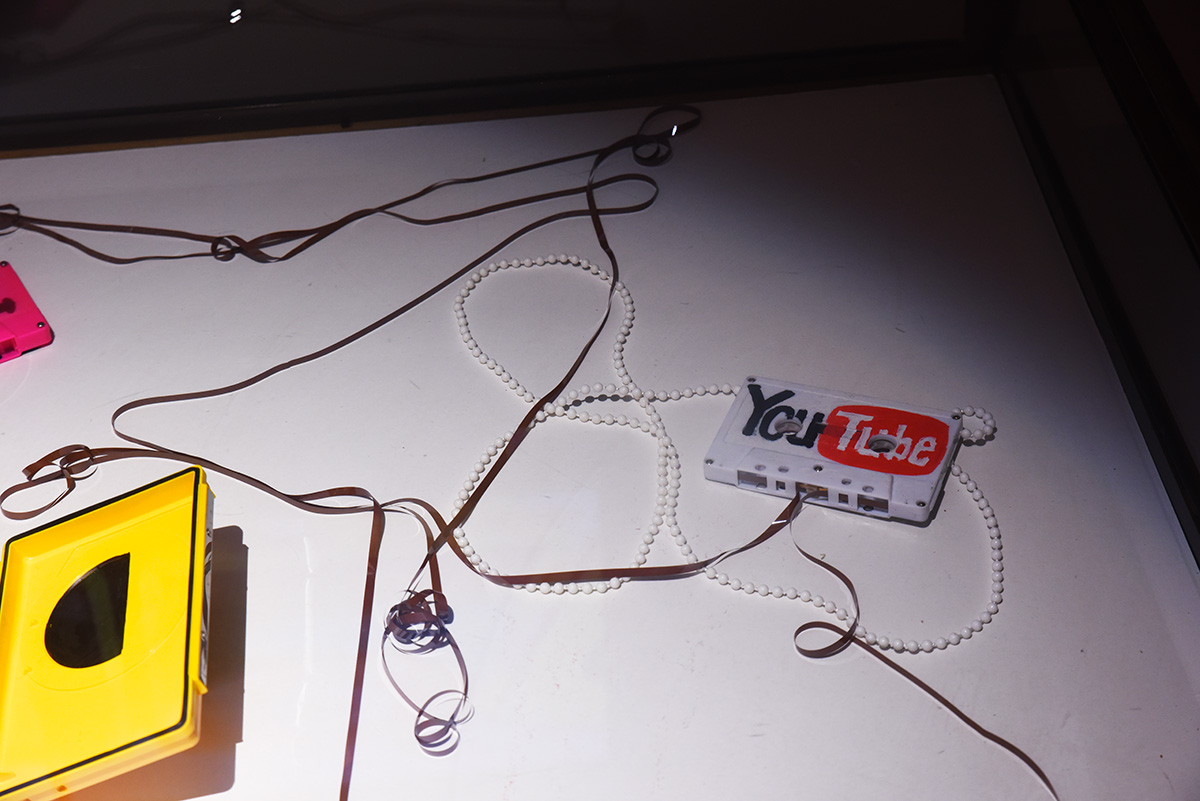
Tapetronic aka Alexis Malbert, Scratchette. Photo by Luce Moreau
Scratchettes! The kind of work that cheers me up!
Since 1999, Tapetronic aka Alexis Malbert has been subverting, dissecting and transforming audio tapes, tape-recorders and other ‘old school’ devices into nifty little music machines. His instruments are as bizarre and charming as a ‘turntable’ for cassette tapes, a music sex toy vibrator or a Walkman on wheels. It’s about hacking, creating new sounds with old ones, but also about giving new life and purposes to bits and pieces of metal and plastic that could otherwise have been discarded:
“We’re not obliged to stay abreast with the new developments that big industries thrust on us,” he told Motherboard. “We can transform what already exists so that we can live a new experience.”
Tapetronic DJing his tape settings during GAMERZ. The most important part of his noisemaking art is not so much the K7 itself but the magnetic fields that can be scratched like vinyl:
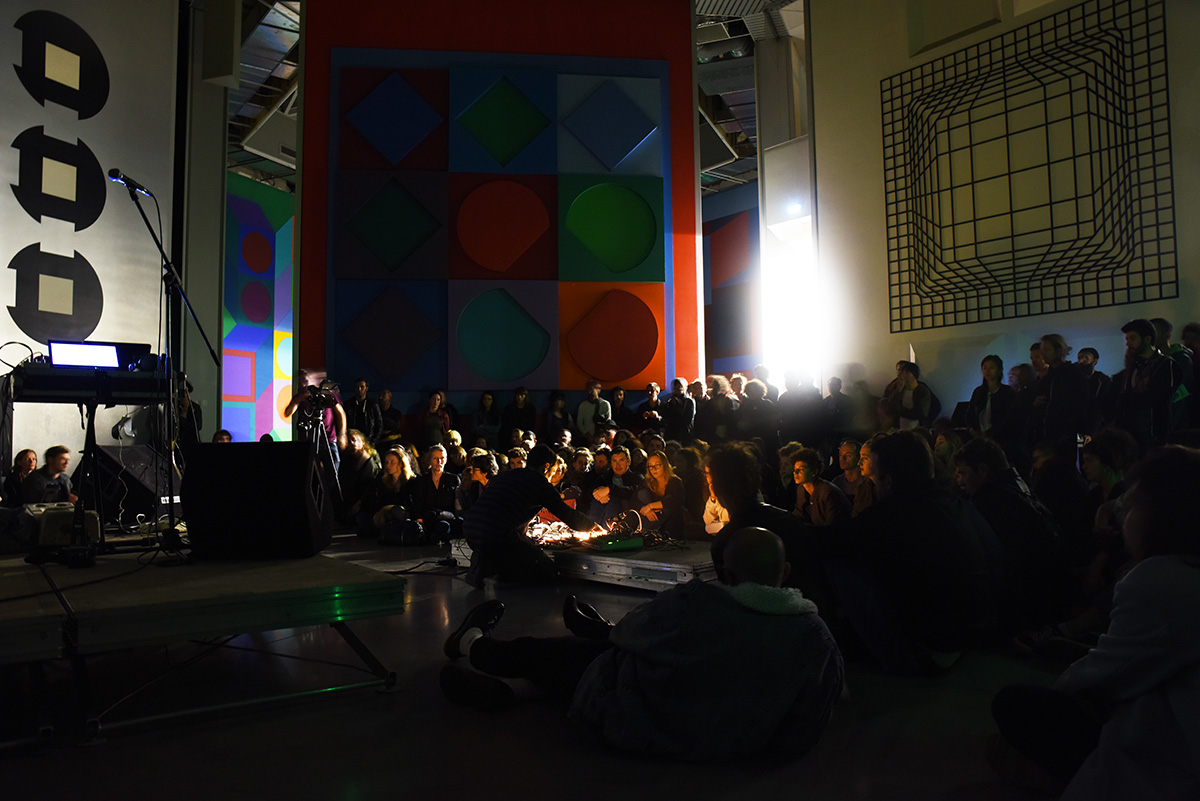
Tapetronic aka Alexis Malbert performance at GAMERZ. Photo by Luce Moreau
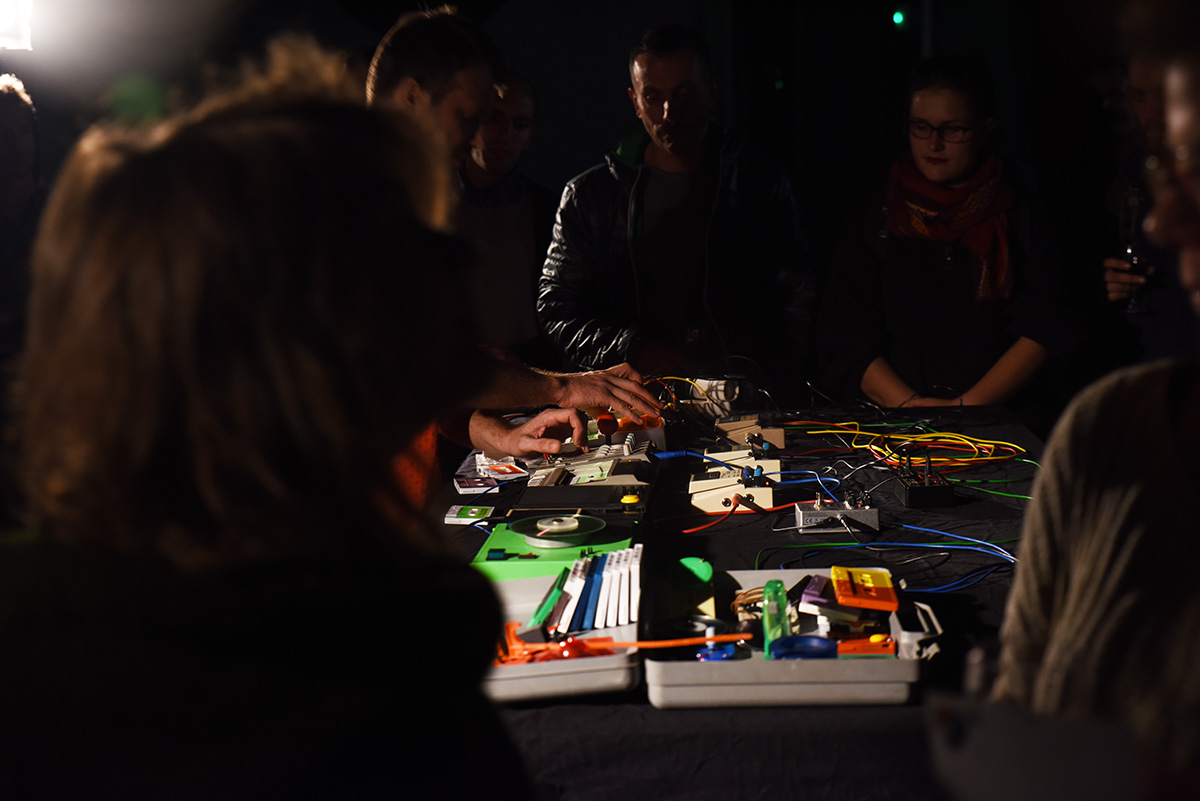
Tapetronic aka Alexis Malbert performance at GAMERZ. Photo by Luce Moreau
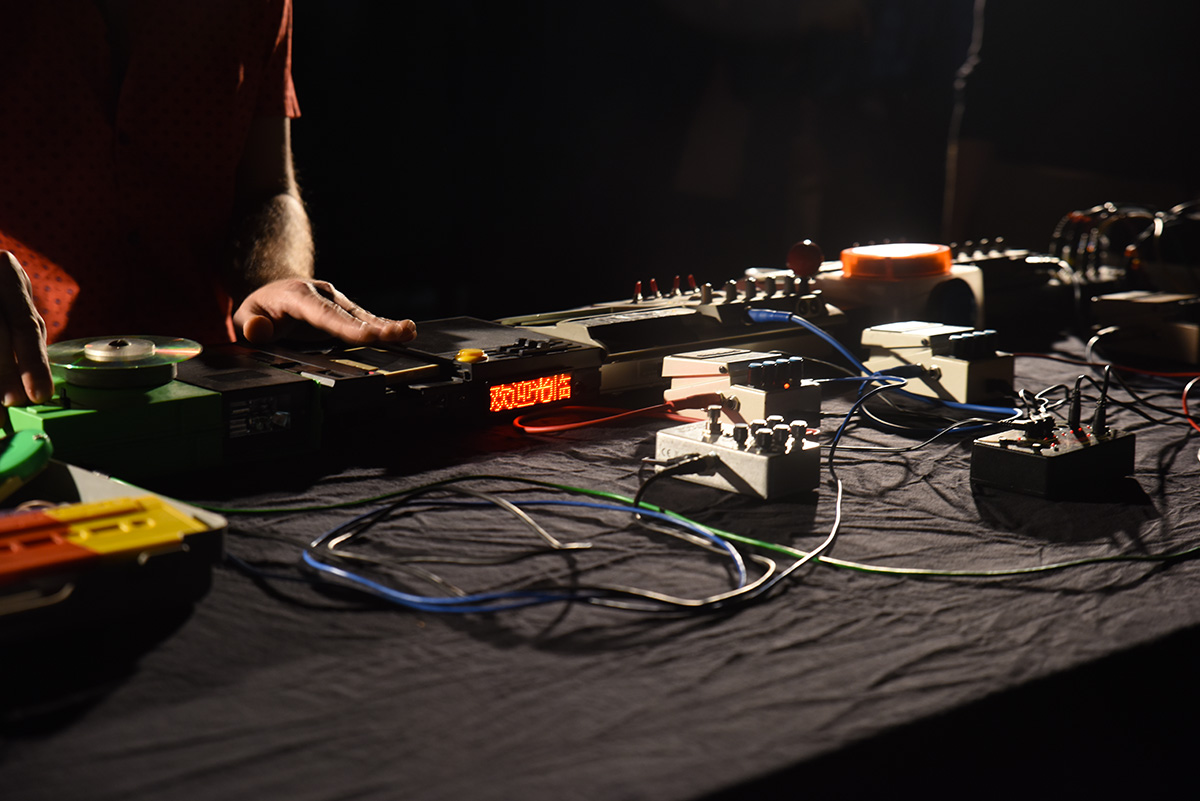
Tapetronic aka Alexis Malbert performance at GAMERZ. Photo by Luce Moreau
I think i need to warn you about what comes next. It’s Windows 93 and it’s wild!
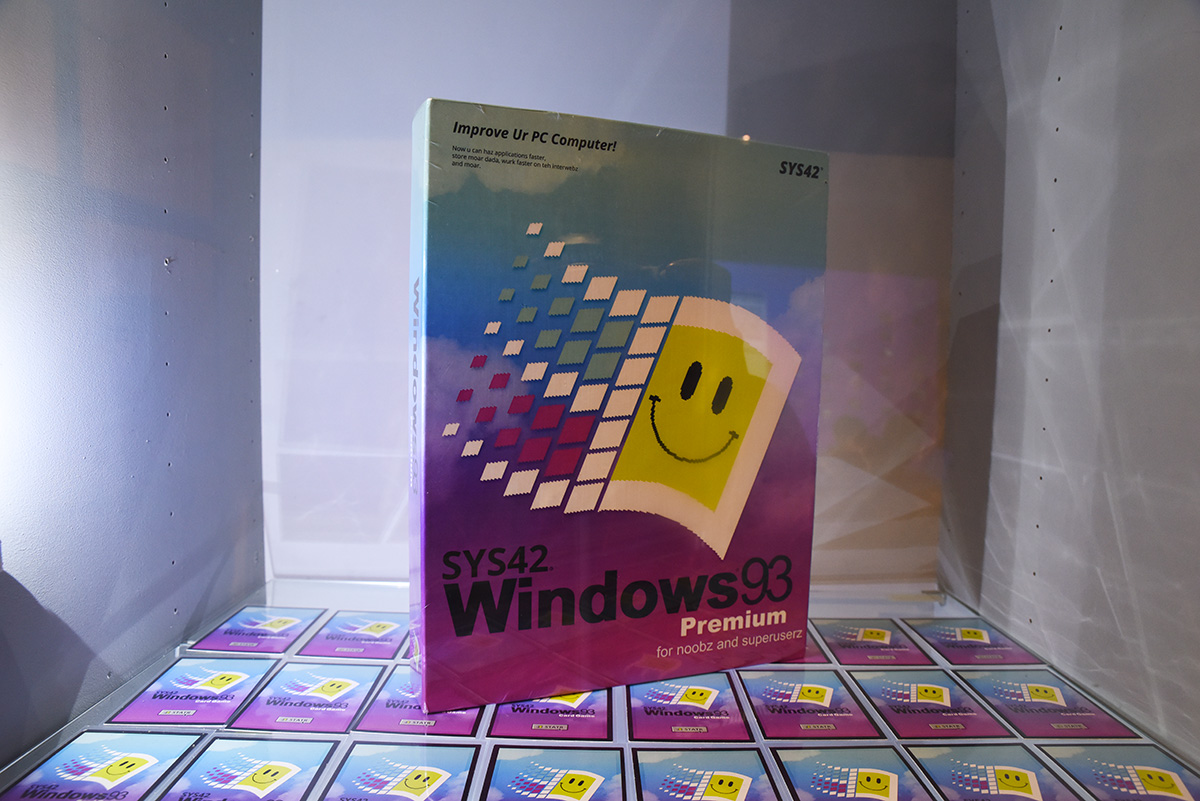
Windows 93 at GAMERZ festival. Photo by Luce Moreau
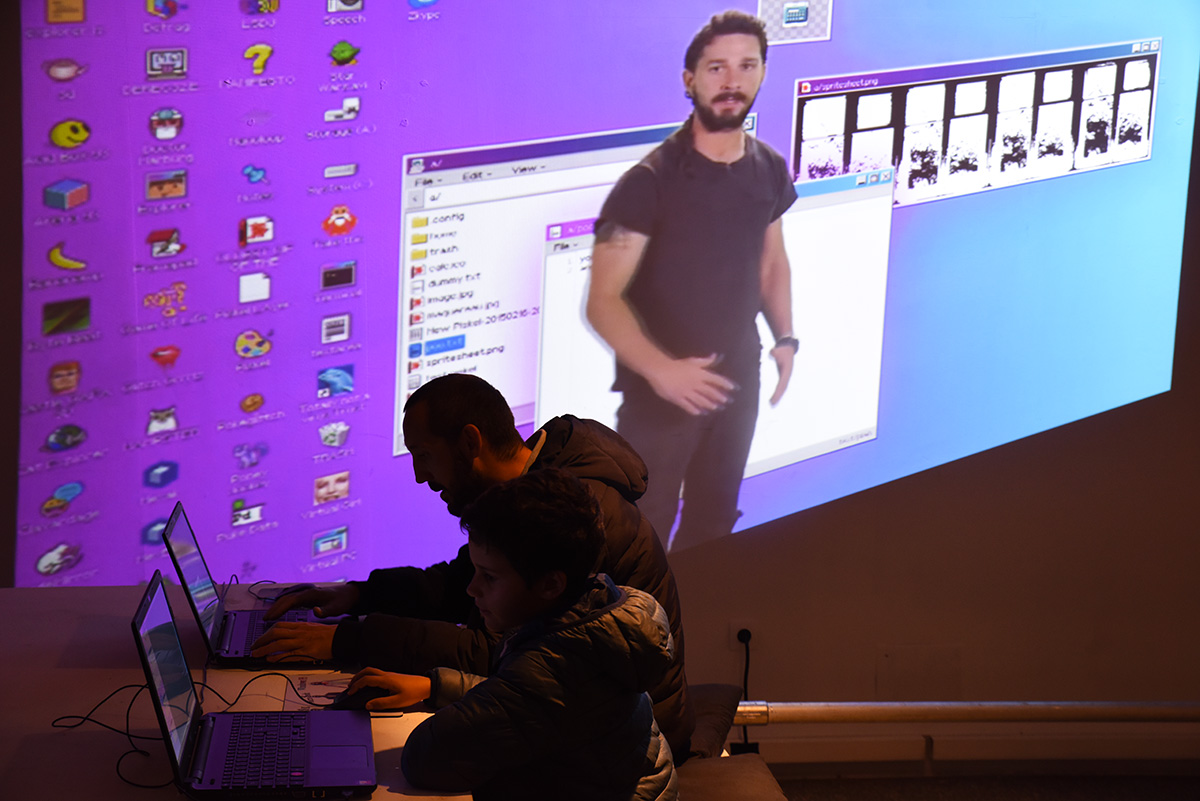
Windows 93 at GAMERZ festival. Photo by Luce Moreau
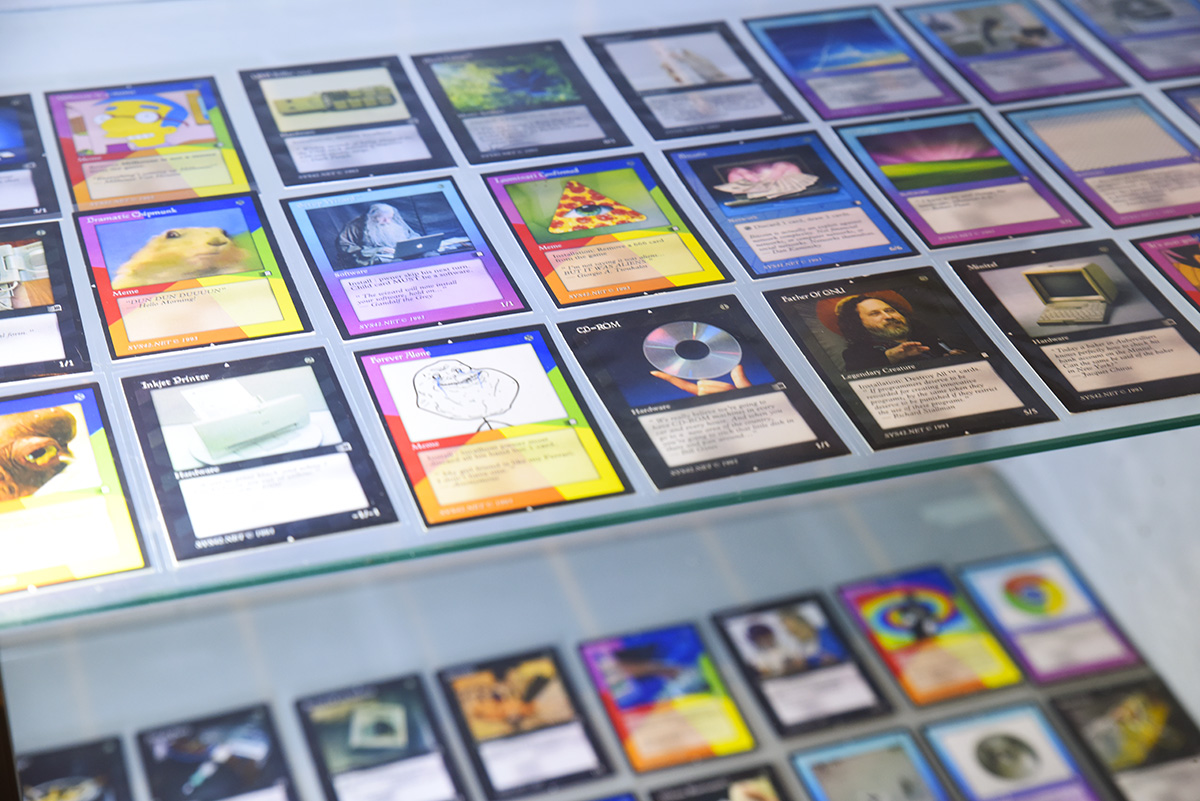
Windows 93 at GAMERZ festival. Photo by Luce Moreau
Artists Jankenpopp and Zombectro‘s spoof project imagines what could have happened if Microsoft hadn’t skipped a step between Windows 3.X and Windows 95.
The Moss and Roy of French art made a rather convincing parody of an early version of Windows, complete with a 8-bit version of Solitaire called Solitude, silly silly keyboard music, a cat explorer, songs for potatoes, a bit of always on trend GIFs, and icons you’re not sure you should be clicking on.
The speed is not what i would call optimal and as i wrote above, it’s proper bonkers. But also very clever and hilarious, even if you’re everything but a geek and you might not get all the references and innuendos
For the GAMERZ festival, the artists gave a 3rd dimension to their hallucinating pixelated online world and turned it into an installation that takes the form of ’90s cyber-café. It was interesting to watch people sit down and play with the operating system. What i found most curious was that it seemed to appeal to children, teenagers and middle age guys. Some stayed there for the nostalgia factor, others might have been attracted by the (intentional) dysfunctions refreshingly at odds with everything that is meant to make today’s mainstream ‘user experience’ seamless and pleasant.
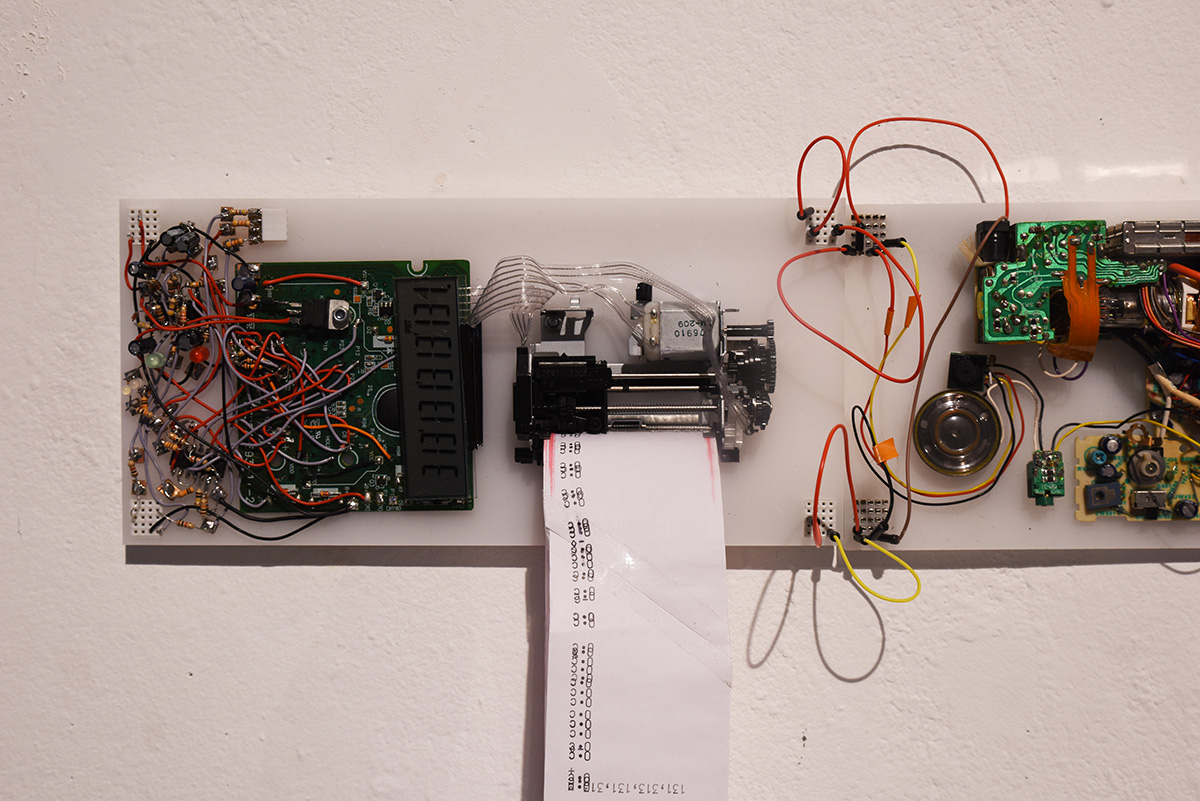
Benjamin Gaulon, ReFunct Modular. Photo by Luce Moreau for GAMERZ
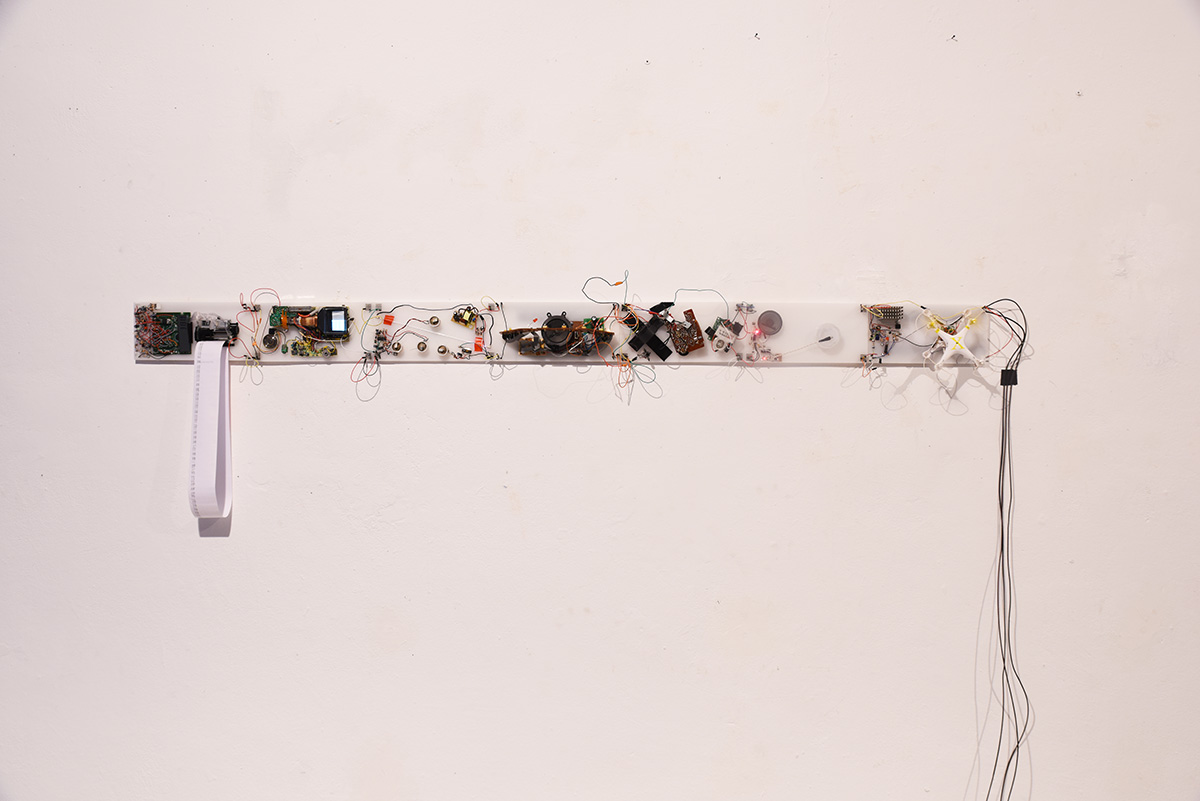
Benjamin Gaulon, ReFunct Modular. Photo by Luce Moreau for GAMERZ
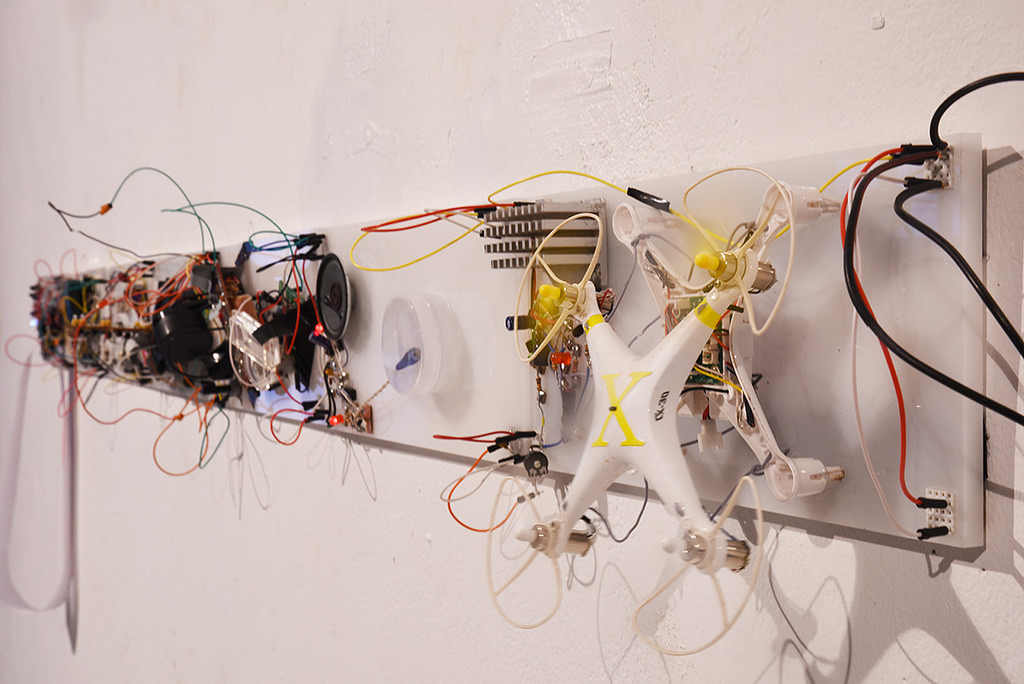
Benjamin Gaulon, ReFunct Modular. Photo by Luce Moreau for GAMERZ
Refunct Modular is a wall-mounted version of Benjamin Gaulon’s ReFunct Media project. It uses a set of modules, each one connecting to the next using custom made connectors, they share power (5 and 12v), audio signal, video signal and spare lines for misc connections.
The sculpture hacks and repurposes discarded electronic devices, both digital and analogue, combining them into a complex chain of interconnected elements. The possible configurations and appearances of the final sculptures seem to be limited only the artist’s impulses and imagination.
ReFunct Modular doesn’t pretend to be an answer to the questions raised by e-waste, planned obsolescence and lack of sustainable design strategies. Rather, as an installation it experiments and explores unchallenged possibilities of ‘obsolete’ electronic and digital media technologies and our relationship with technologies and consumption.
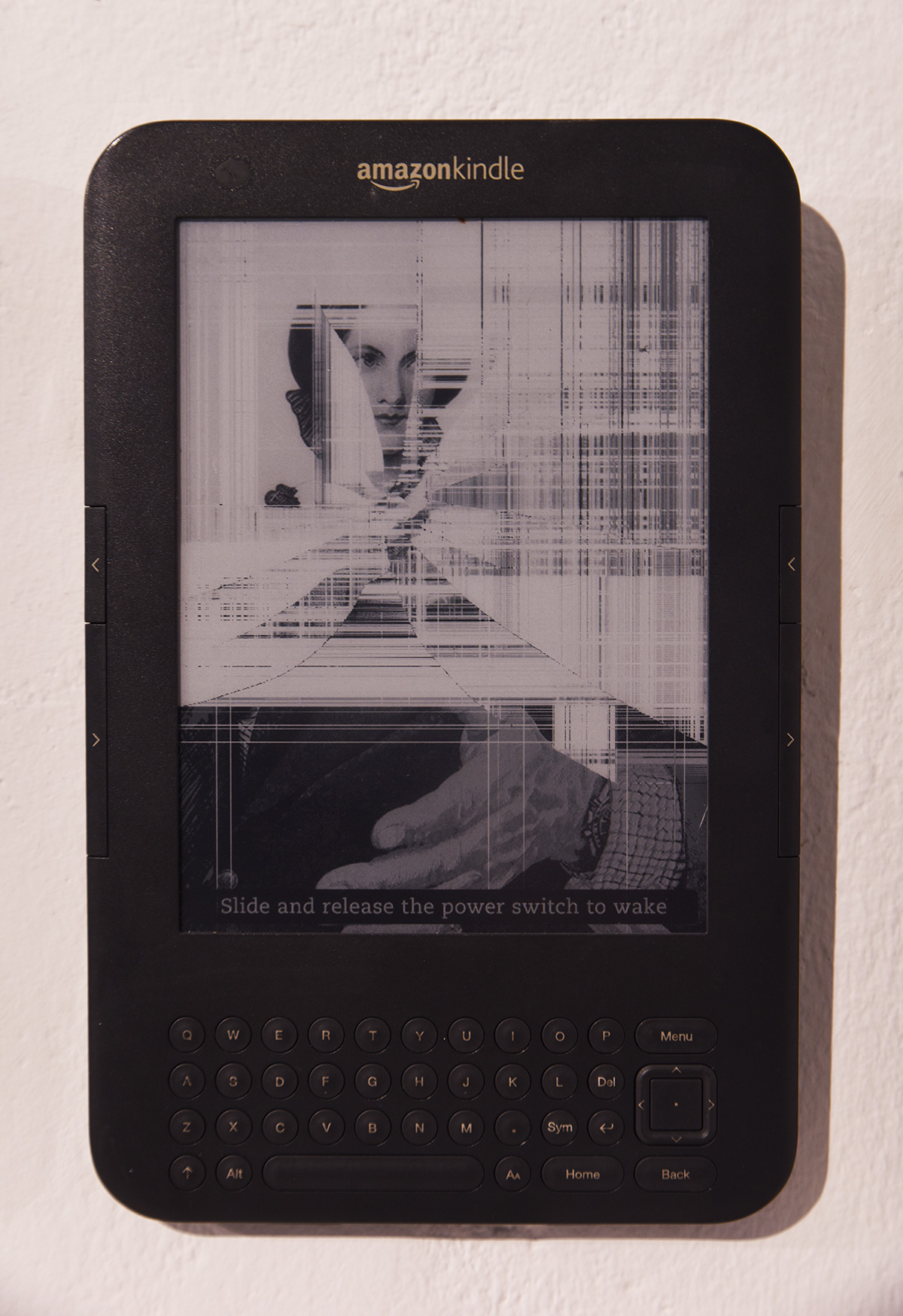
Benjamin Gaulon, KindleGlitched*. Photo by Luce Moreau for GAMERZ

Benjamin Gaulon, KindleGlitched*. Photo by Luce Moreau for GAMERZ
KindleGlitched* is a work that explores the (so far grossly neglected) aesthetics of Planned Obsolescence. The work is a series of glitched kindles donated, found or bought on eBay. They have stopped working and would have ended up on a dump somewhere in Ghana if the artist hadn’t seen their singular beauty, signed them and sold them on Amazon as an insolent gesture of Retail Poisoning.
Reso-nance Numérique, Chimères Orchestra at GAMERZ festival
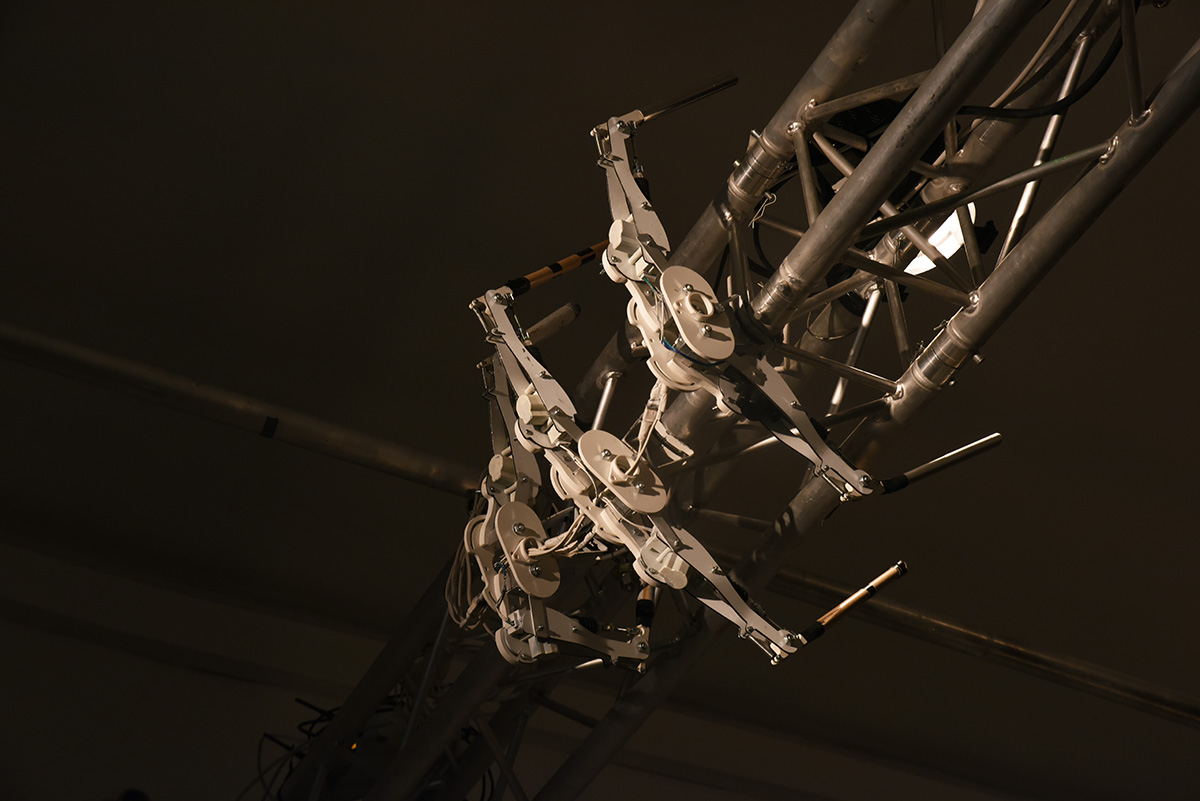
Reso-nance Numérique, Chimères Orchestra. Photo by Luce Moreau
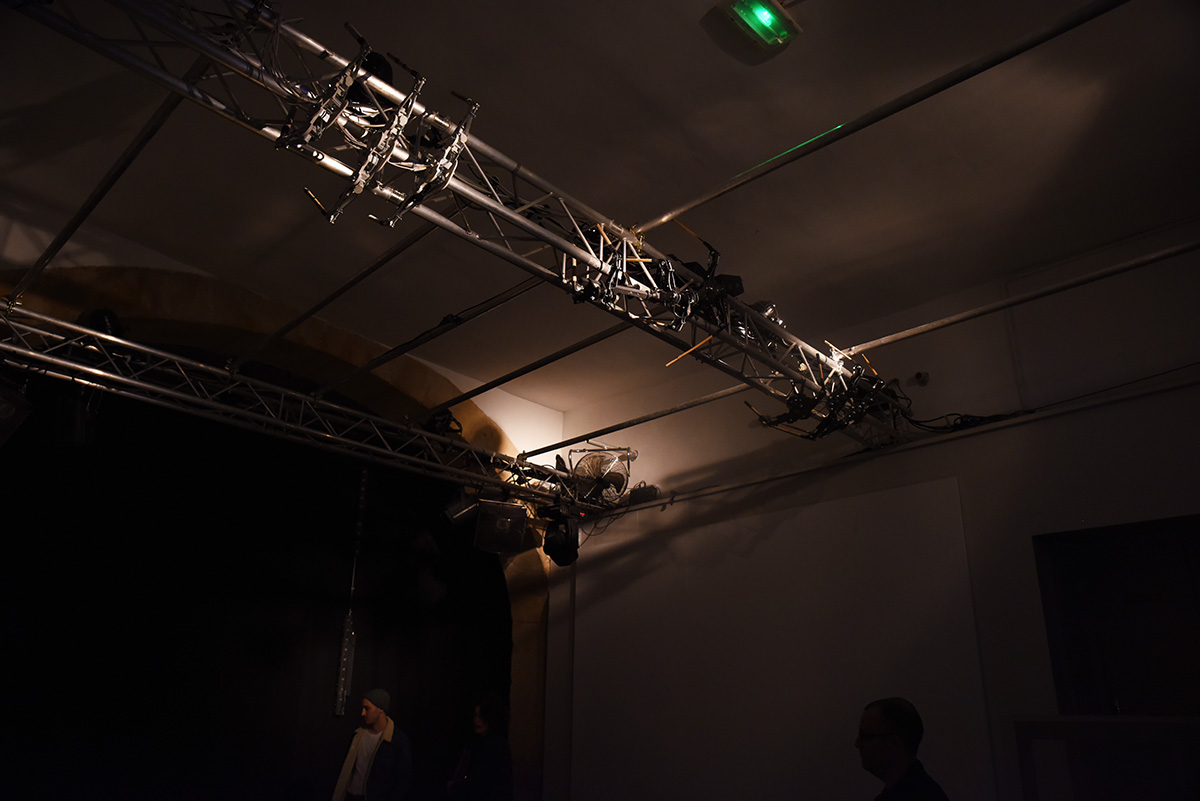
Reso-nance Numérique, Chimères Orchestra. Photo by Luce Moreau
Chimères Orchestra are drummer-robots that hook onto urban structures. The metallic creatures play with the sonic capabilities of the built environment by drumming onto them with their little legs. The work is playful but also a bit mysterious and worrying. The creatures live above your head, dance with a mind that seems to be their own and seem to combine traditional percussion with coding mechanic with surprising ease. If simple machines can already exploit our architectures and music traditions now, imagine how robots will surpass and humble human creativity in the near future!



